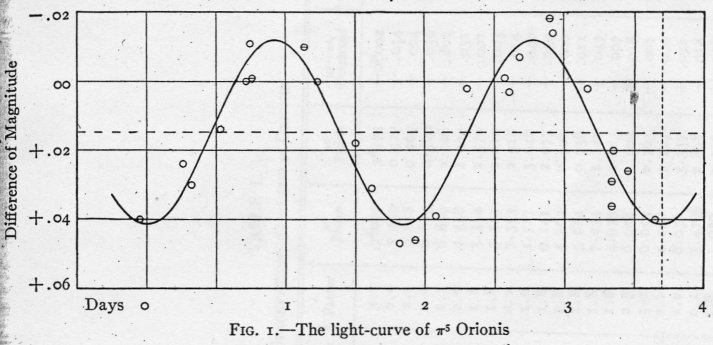
 |
| From the discovery paper, Pi-5 Orionis is seen to vary smoothly twice over the orbital period of 3.70 days, showing it to be a tidally distorted ellipsoidal variable that continuously presents different apparent "sizes" to us. The discovery was made around 1917 with the first operating photoelectric photometer, attached to the historic 12-inch refractor at the University of Illinois Observatory. The accuracy, of the order of a hundredth of a magnitude, is remarkable. The photometer, which began the era of electronic astronomy, had also been used to make the first accurate light curve of an eclipsing binary, Algol. (From an article by Joel Stebbins in the Astrophysical Journal, vol. 51, p. 218, 1920.) |